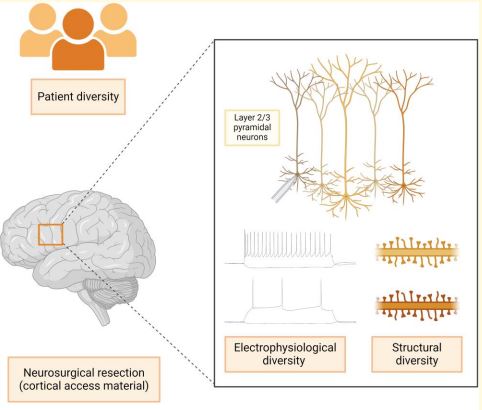Neuronal adaptability, or plasticity, is fundamental to how the human brain processes and responds to changes throughout life. Within the neocortex, superficial pyramidal neurons are crucial for synaptic communication and integration. Yet, the impact of clinical factors like age and disease on their structure and function remains largely unexplored. In our latest study, we investigate how age, pathological conditions, and their treatments shape these neurons, aiming to reveal deeper insights into the mechanisms of plasticity in the adult human neocortex.
Abstract
Our study examines the structural and functional effects of age and pathological conditions, such as epilepsy and tumors, along with their treatments, on superficial pyramidal neurons in the human neocortex. Using samples from seven patients undergoing surgery, we correlated age, disease, and medication type (antiepileptic drugs and steroids) with neuronal attributes like dendritic spine density and excitatory neurotransmission. We found that dendritic spine density declines with age, signaling a reduction in structural plasticity, while other properties, like excitatory neurotransmission, remain stable—suggesting compensatory mechanisms that sustain function. Additionally, we observed no significant differences in neuron structure or function associated with specific disease states or treatments, underscoring the complexity of clinical influences on brain plasticity.
If you want to see the full article, please visit: https://doi.org/10.1093/braincomms/fcae351
